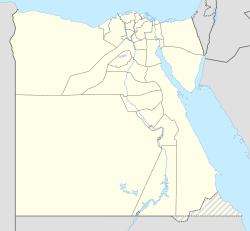KV42 facts for kids
Quick facts for kids KV42 |
|
|---|---|
| Burial site of Hatshepsut-Meryetre | |
| Coordinates | 25°44′17.1″N 32°36′02.6″E / 25.738083°N 32.600722°E |
| Location | East Valley of the Kings |
| Discovered | 9 December 1900 |
| Excavated by | Victor Loret Howard Carter |
Tomb KV42 is an ancient Egyptian tomb found in the famous Valley of the Kings in Egypt. This special place was built for Hatshepsut-Meryetre. She was one of the wives of the powerful pharaoh Thutmose III.
Even though the tomb was made for her, Hatshepsut-Meryetre was not buried there. Instead, the tomb was later used by a man named Sennefer. He was a very important official, serving as the mayor of Thebes during the time of Amenhotep II. Several members of Sennefer's family were also buried in this tomb.
Tomb KV42 has a unique shape for its burial chamber. It looks like a cartouche, which is an oval shape with a line at one end. This shape was often used to enclose the names of pharaohs and queens in ancient Egyptian writing. This cartouche shape is a common feature in tombs from the early Eighteenth Dynasty.
Exploring Tomb KV42
Tomb KV42 is located in the eastern part of the Valley of the Kings. This valley is a famous burial ground for pharaohs and nobles of the New Kingdom. Many important discoveries have been made here.
Who Was the Tomb For?
Historians and archaeologists are not completely sure who the tomb was originally meant for. It's a bit of a mystery!
One clue is an unfinished stone coffin, called a sarcophagus, made of quartzite. Some experts think this sarcophagus might mean the tomb was once planned for Thutmose II.
However, another discovery points to a different person. When tombs were built, ancient Egyptians sometimes buried special items called "foundation deposits." These items were placed in the ground before construction began. In KV42, foundation deposits were found that had the name of Queen Merytre-Hatshepsut on them. This suggests she was the intended owner.
Later Users of KV42
Tomb KV42 became linked to Sennefer and his wife, Senetnay. Sennefer was a very important person in ancient Egypt. He was the mayor of Thebes, a major city at the time.
In 1901, the famous archaeologist Howard Carter found a complete set of canopic jars belonging to Senetnay. Canopic jars were special containers used to hold the internal organs of a person during the mummification process. Lids from other canopic jars, showing a man with a beard, were also found. These are thought to have belonged to Sennefer himself. These discoveries show that Sennefer and his family later used Tomb KV42 as their burial place.
Images for kids
See also
 In Spanish: KV42 para niños
In Spanish: KV42 para niños




